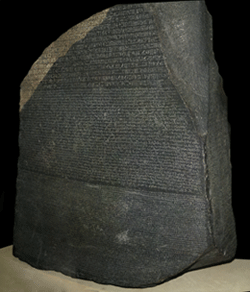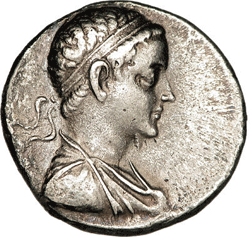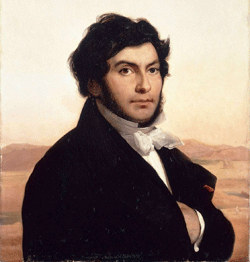|
The Rosetta Stone
Answer
to Name
This Famous Antique Game - Jjanuary 2014
|
 |
|
The Rosetta Stone was correctly identified by: Sherry Blanton, Rae Bachus and Julie Kimbrell of the Old School Antique Mall in Sylva, N.C.; Scott and Carolyn Brown of Memories Flea An'Tique Mall in Prattville, Ala., Teresa P. Bland; Robert Bernier; Ted Carlton of Utah; and Sherron Lawson of Roswell, Ga. George Lawson was inadvertently left off the list of those who correctly identified the Bay Psalm Book last month. My apologies.
In about 196 B.C., a decree was carved into a stele of black or gray granite detailing how Ptolemy V of Egypt pardoned, remitted or reduced taxes on the nobles, the people and the priests—which sounds like an event worthy of a monument—and how he also: provided grain and silver to many of them; released prisoners; restored peace after an uprising; allowed citizens who had revolted to return to their homes; set up temples and altars; and accomplished various other good deeds. In return, the priests were to set up a statue of Ptolemy V in the temple, honor it three times per day, and create a shrine for it. They were also to hold an annual five-day festival, and each month, they were to honor Ptolemy’s birthday and the date of his being crowned. It also said the common people would be allowed to make copies of his shrine for their homes, but they must honor the shrine every month.
|

The 1,700 lb. Rosetta Stone.
|
Finally, the decree called for all of these deeds to be recorded in hieroglyphics, Egyptian demotic and Ancient Greek on a stele. This—and not the Pharaoh’s good deeds—is why the Rosetta Stone is the most popular artifact in the entire British Museum in London. About 25 years after its discovery in 1799 in Rashid (Rosetta), Egypt, by a soldier in Napoleon’s army, and after being studied1 by many scholars and linguists, Jean-François Champollion published a translation of the hieroglyphics in 1824. The Rosetta Stone was the key to deciphering the hieroglyphic language of ancient Egypt, which had long been a lost language. Demotic, the language engraved on the middle section of the stone, was an everyday form of the Egyptian language that had been used in centuries past for business and government matters and by the regular people (those who could read, that is). However, it too had been unused and had to be deciphered.
|

|

|
|
The image of Ptolemy V on a tetradrachme coin.
(Photo: cgb.fr.)
|
An 1831 oil painting of Jean-François Champollion, December 23, 1790 – March 4, 1832 by Léon Cogniet (1794-1880).
|
The language on the lowest section of the stone was Ancient Greek, which also required scholarly assistance for the translation. Greek was the language of the Egyptian rulers at that time because Alexander the Great had conquered the country, and one of his generals established the Ptolemaic Dynasty as the ruling class.
When the Rosetta Stone was found, it was being used as a building block in a fortress wall. It weighs about 1,700 pounds and measures 45 inches high by 28.5 inches wide by 11 inches thick. Technically, there are only two languages on the Rosetta Stone since hieroglyphics and demotic are both Egyptian. On it, there were 14 lines of hieroglyphics, 32 lines of demotic and 54 lines of Greek, but some were fragmented or other lines were missing due to the stone being broken. Even though there are only 32 lines of demotic, it required 2,303 words in English to translate their meaning.
Prior to Champollion’s work, Dr. Thomas Young, a physician and a scholar, completely translated the demotic text. He was not able to crack the hieroglyphics, although he did translate some of the names in hieroglyphics. One of the major problems in this whole ordeal was the languages are not exact translations of each other; each language paraphrased the others. Another problem was that hieroglyphics and demotic were both phonetic and pictorial, hence the difficulty in translating them—like two dialects of the same language. Most scholars assumed hieroglyphics was totally pictorial.
Jean-François Champollion was a gifted linguist who reported could speak more than a dozen languages. In addition to French, he knew: Persian, Hebrew, Greek, Latin, Arabic, Chaldean, Coptic, Sanskrit, Ethiopic, Chinese, Amharic, Avestan, Pahlavi, Syriac and Ge’ez. Champollion did benefit from the work of previous scholars, but he is the person credited with discovering the meaning of hieroglyphics. An educator and university professor during his life, he also served as the Conservator of the Egyptian Collection in the Louvre. He died at the age of 41 from a stroke.
Other stelae were later found in Egypt with dual languages recorded on them, but the Rosetta Stone was the key to unlocking the mystery of hieroglyphics.
So how did an Egyptian artifact discovered by a Frenchman end up in the British Museum? Napoleon Bonaparte led an expedition to Egypt to take it from the Ottoman Empire, secure French trade there, and disrupt British control of the Mediterranean. Napoleon conquered most of the country, even after the British sank his fleet at Alexandria. The British finally defeated the French army (minus Napoleon who had returned to France) and took possession of the Rosetta Stone and other antiquities they had acquired.
----------------------------------
1 To make copies of the text, plaster casts were made of the Rosetta Stone. Other copies were made by inking the stone to make intaglio copies. These were dispersed to universities and scholars in many countries for study.
The translation of the demotic on the Rosetta Stone may be read at www.britishmuseum.org/explore/highlights/articles/r/the_rosetta_stone_translation.aspx.
|